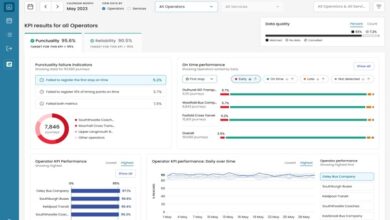How real-time search analytics and AI can help the DOD break down data

From sensors on the ground to drones in the air, data is becoming more ubiquitous for military operations. The quality and accuracy of the insights derived from data depend on the ability to link and examine all the relevant data. However, transferring and storing massive amounts of data in a single place for analysis is not only costly in terms of time and bandwidth, but also prone to errors and delays. Consequently, finding the insights hidden in the vast amounts of information becomes more difficult than ever.
Artificial Intelligence (AI), including machine learning (ML), deep learning and Generative AI (Gen AI), offers new ways to discover and curate data. Marrying search with AI unites the best of both technologies to create a simpler way for everyone to access data. As the military services look to share and consume more data to make real-time decisions, service members need confidence in the insights generated from their data and must trust that their proprietary data will remain secure.
The Department of Defense’s (DoD) Chief Digital and Artificial Intelligence Office (CDAO) continues to move forward with the adoption of emerging technologies such as Gen AI. The CDAO has identified nearly 200 use cases for how the department could leverage the breakthrough technology across a variety of functions, according to the office’s chief technology officer. While Gen AI has commercial applications within the DOD, the consequences are higher and there is a need for the DoD to be responsible in how the department uses the technology.
How search analytics help
Search powered AI is one of the tools that can help the DoD achieve some of these goals. A distributed, real-time search and analytics engine that can centrally store data for fast search, fine-tuned relevancy, and powerful analytics can help defense agencies break data silos and securely share information. There is a pressing need for defense agencies to manage unstructured data such as text, images, geospatial, and time series, and support complex queries and aggregations. Real-time search analytics can also integrate with other tools and platforms such as Apache Hadoop, Apache Spark, business intelligence applications, and AI solutions.
Defense agencies must manage data on-premises, in the cloud, or within a hybrid environment. They need to accommodate remote devices and challenging terrain. Essential security features include encryption, authentication, authorization, and auditing.
A search analytic platform should offer more than real-time search. It must incorporate security functions with predictive analytics. Cloud monitoring and observability capabilities are crucial. They enable automation and anomaly detection, which in turn, hasten problem resolution and the discovery of opportunities.
Breaking down silos
Tearing down data silos and achieving data interoperability is a complex and challenging task. To overcome these challenges, defense agencies must embrace a multifaceted approach that includes technical innovation, organizational restructuring, and cultural shifts. Some of the possible strategies are:
— Promoting inter-team collaboration and data sharing across different domains and partners.
— Establishing a centralized data repository or data lake that can store and manage unstructured data from various sources.
— Employing data integration tools and solutions that can connect, transform, and enrich data from disparate systems and formats.
— Leveraging cloud-based platforms and services that can offer scalable, secure, and flexible data storage and analysis capabilities.
Unlocking hidden value
The future of defense depends on the ability to access, analyze, and share data across different domains and platforms. But too often, data is trapped in silos that prevent effective collaboration and decision-making. For this reason, it’s essential for defense agencies to adopt methods to extract real value from data, facilitating secure sharing and achieving interoperability.
Real-time search analytics can be a valuable tool for the DoD to tear down data silos and harness the potential of their data. However, search analytics alone is not enough to solve the data silo problem. The DoD also needs to adopt a data strategy that aligns with their mission and vision, and foster a data culture that encourages data quality, accessibility, and interoperability, as outlined in the Pentagon’s data, analytics and AI adoption strategy.
By using search powered AI, defense agencies can transform data from a liability to an asset and gain a strategic advantage in a complex and dynamic world.
Chris Townsend is Vice President of Public Sector at Elastic, a data research and analytics company.



